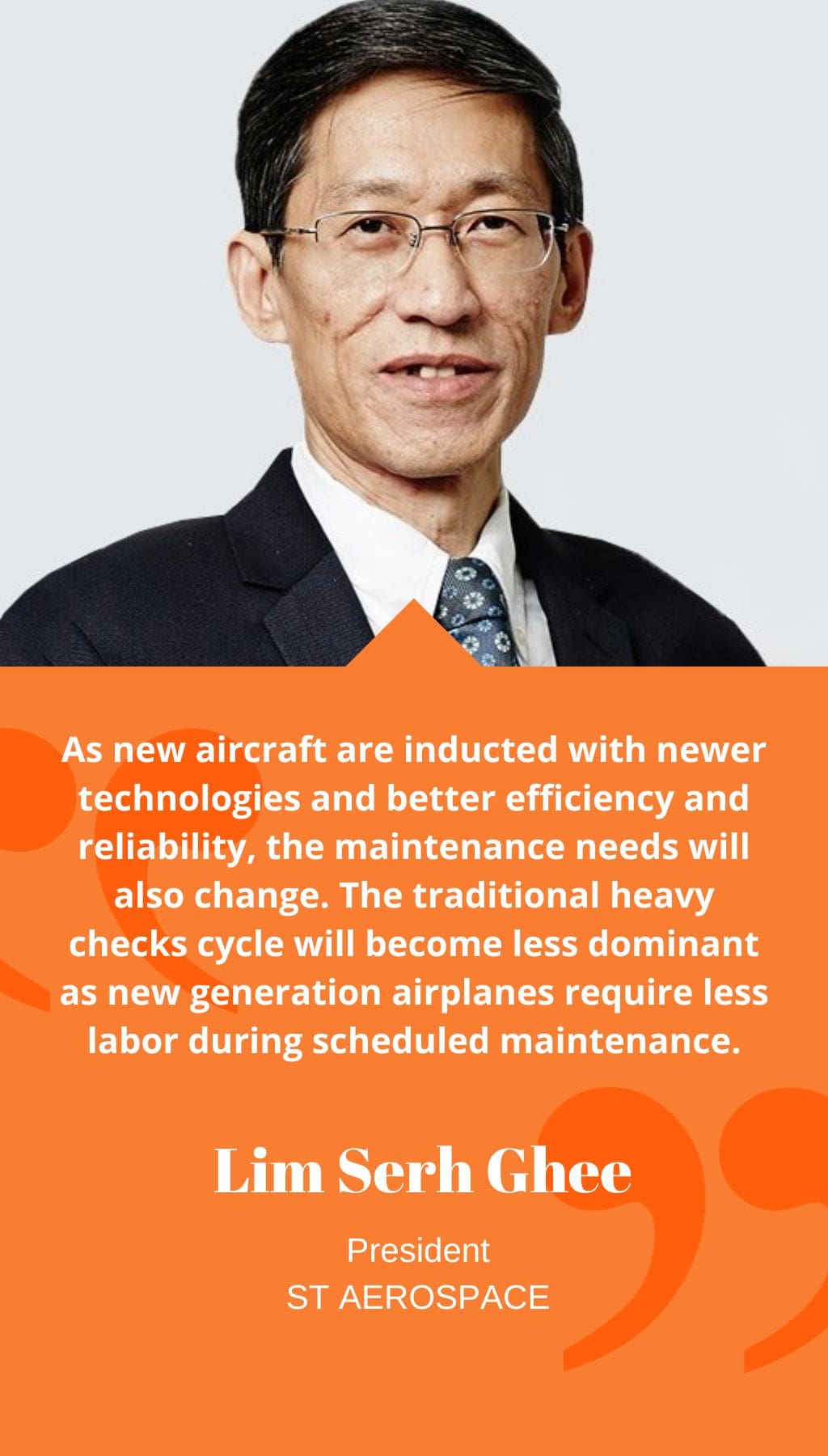
- Singapore | 29 April 2019

Could you describe the service offering that ST Aerospace provides and how it has grown since its establishment in 1975?
ST Aerospace began in 1975 in Singapore with the aim of supporting the Republic of Singapore Air Force (RSAF) with their aviation maintenance requirements. Over the years, the business has grown in parallel with the growth of global commercial aviation, and now has a presence in the US, China, Europe, Australia and Singapore. Currently, its service offerings include aircraft maintenance and modification, component total support, engine total support, aviation and training services, and aerospace engineering and manufacturing. The company’s portfolio consists of about 30% military and 70% commercial by revenue. ST Aerospace has the engineering depth and expertise to provide repair and engineering solutions that are tailored to the requirements of its customers. It offers value-added solutions to customers, ranging from engineering design to modify an aircraft fleet to designing and manufacturing aviation products such as aircraft seats. One of the company’s differentiators is its work culture, which has a strong focus on technical competence, timeliness and dependability.
How does ST Aerospace leverage the synergy within the ST Engineering group, of which it is a part?
ST Aerospace is a part of ST Engineering, which is a homegrown defense and engineering group with three other strategic businesses in electronics, land systems and marine. ST Aerospace leverages synergies within the ST Engineering group to deliver integrated and networked solutions spanning the air, land and sea domains. As the unit with air platform expertise, ST Aerospace leads in unmanned aerial vehicle (UAV) projects, while the land system unit, ST Kinetics, leads the autonomous ground vehicle projects, and the marine unit, ST Marine, leads sea platforms. The electronics unit, ST Electronics, with its strengths in communications, software and intelligent systems, can develop the intelligence in the platforms. One example of collaboration is a UAV developed by ST Aerospace that can be launched from the rear of a vehicle developed by ST Kinetics. Beyond collaborating on product design and development, the strengths of ST Engineering can also be harnessed to help the group innovate and perform better in the delivery of services to customers. For instance, the company is working on using data analytics more in its operational processes to improve decision-making as well as automate some of its work processes to benefit from unmanned operations where suitable.
What kinds of trends have you noticed in the MRO segment, and what changes do you see moving forward?
The global MRO spending continues to be strong, and spending is expected to achieve a compounded annual growth of 5.7% to US$66 billion in the next 10 years. The largest segment of this spending is for engine repair overhaul, for which material costs will be dominant. As new aircraft are inducted with newer technologies and better efficiency and reliability, the maintenance needs will also change. The traditional heavy checks cycle will become less dominant as new generation airplanes require less labor during scheduled maintenance, which will also happen at longer intervals. MRO in the future will evolve along the features of the newer airplanes, as the focus shifts towards a smarter and more data-centric maintenance regime. Beyond the system-level troubleshooting, the more detailed level of MRO will have to evolve to become more efficient by using smart diagnostics to troubleshoot, and automation to reduce the human work effort. This points towards the need to invest more in robotics, analytics, data communications, and systems thinking to be able to effectively manage and innovate processes to maintain onboard smart systems.














